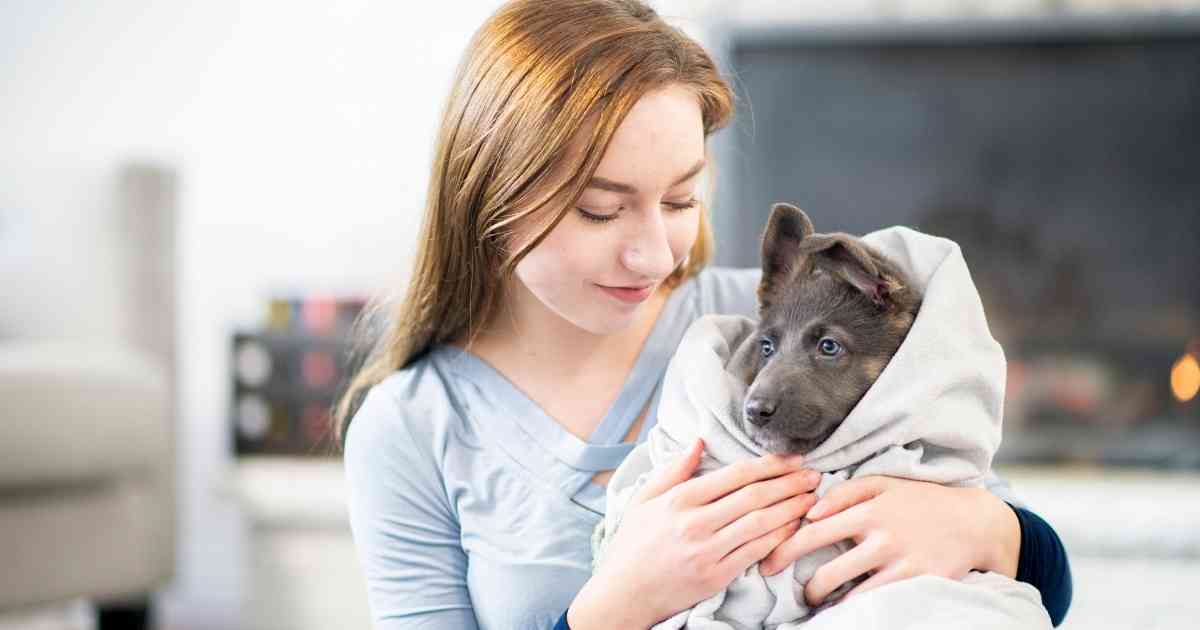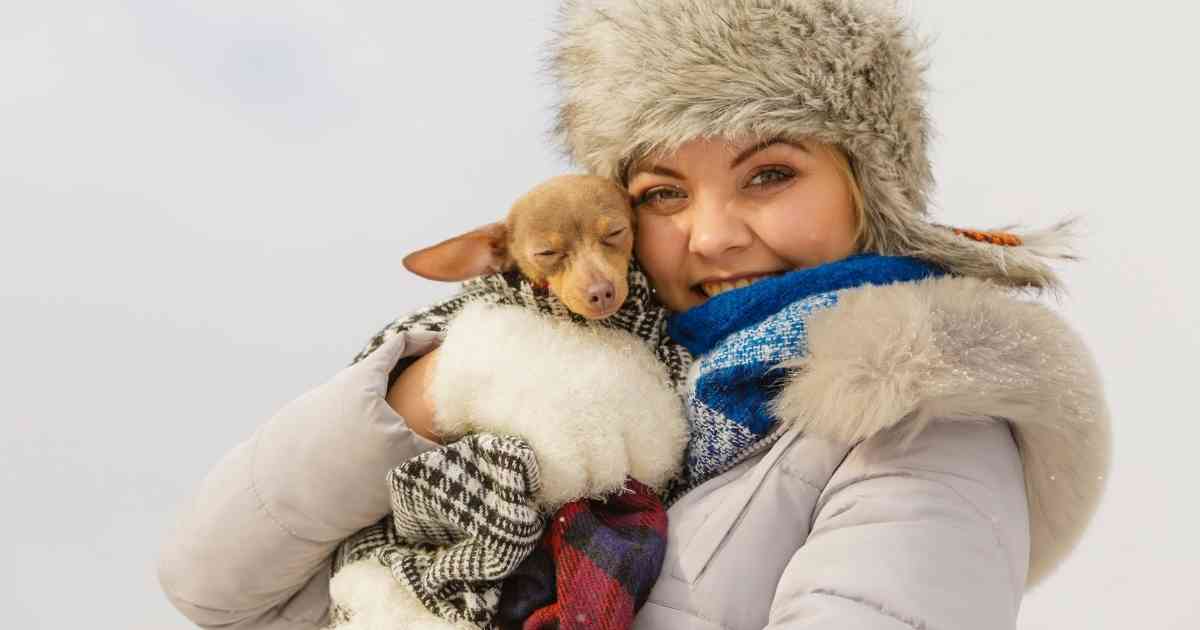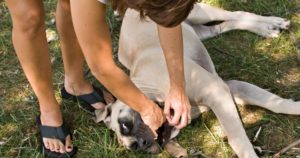Any newborn creature depends on its mother after birth. Opening its eyes to the new world, it is unaware of its surroundings and how to tackle them.
The same is the case for newborn puppies. They cannot retain their body heat right after birth, so they rely on their mothers to keep them warm. Adverse temperatures can have negative impacts on your puppy’s health. If not kept in the right environment, it won’t take long for your puppy to catch a cold, and you don’t want that for your furry friend.
When you adopt a puppy, you have to take on many responsibilities. Taking care of its nutrition, providing it with adequate amounts of exercise, and, of course, giving plenty of love are all necessary to protect your dog’s health. If it’s your first time, this guide can be a useful tool to have a good start.
Protecting Your Puppy

If a situation arises where a puppy is separated from its mother, you’ll notice the puppy is shivering from the cold. A risk of hypothermia, the biggest hurdle in having a puppy, increases, and you’d need to find out how to keep puppies warm.
At birth, a puppy’s body temperature will fall between 95° to 99°F. In case the temperature drops below 94°F, your puppy could be at risk of life-threatening hypothermia.
Soon enough, though, a puppy will become acclimated to its surroundings, and its threshold for temperature in the next three weeks should increase to 99° -100°F. Eventually, a puppy will be ready to sustain its normal temperature at 101.5°.
At a tender age, the right temperature is more important than food for puppies. Puppies will cry like babies when uncomfortable or chilly, but if we keep them at an adequately warm temperature, they will remain quiet.
Keeping in mind that we are looking for a normal body temperature, creating an environment that is too warm beyond the tolerance level of a puppy’s body can negatively impact it, and could send it into shock. If you feel your puppy is too hot, this guide can help you to better understand why.
Effects of Cold on Puppies

Cold puppies are unable to eat or digest food. Their heart rates plummet, and circulatory and breathing systems could fail, which could be life-threatening.
We often see puppies snuggling and cuddling with each other or their mothers, and we think they’re cute, but this snuggling behavior weighs more on maintaining body temperature than on affection. Dogs are warm-blooded, which is why you often see them snuggling with other dogs to keep themselves warm. For other reasons why your dog is cuddling up, check out this extensive guide!
The cold weather may take its toll on our furry fellows, and could lead to life-threatening situations. We have listed a few of these situations below that could arise for puppies due to cold temperatures.
Hypothermia
The riskiest situation for puppies due to cold is hypothermia. If your dog’s temperature falls below normal, hypothermia starts to set in.
In this condition, the dog’s body starts narrowing the blood vessels, and restricts blood flow to the skin, legs, feet, and vital organs, like the brain and heart. The symptoms of mild-to-moderate hypothermia exist in many forms. Your dog could start shivering and its muscles could begin to feel stiff. A puppy could start getting lethargic and lazy, and have cool body surfaces.
All these signs indicate your dog’s temperature is dropping, and if temperature is not controlled, the situation could worsen. In severe hypothermia, a puppy will stop shivering and its heart rate will start to fall rapidly, leading your puppy to collapse.
Frostbite
Followed by hypothermia, frostbite is another condition caused by cold temperatures in dogs. If the temperature falls below a certain level, the natural blood flow is restricted to the essential organs of the dog’s body.
Frostbite is usually not a life-threatening condition, but it can still damage the organs of your puppy’s body. This can cause tissue damage due to reduced blood flow.
The signs of frostbite in puppies can differ – you may observe swelling in the area at risk, or the skin will feel cold, or the color will change. In addition, a few patches of dead skin may appear. To avoid frostbite, keep your puppy dry and at a tolerable temperature. If you feel your puppy is showing symptoms of frostbite, move it to a warm place immediately or, for better guidance, call your vet as soon as possible.
Disorientation
A drop in temperature can reduce blood flow to the organs, and if blood flow is restricted to the vital organs like the brain or lungs, it will have an adverse effect on a dog’s body. Restricting blood to the brain can cause disorientation, making your puppy feel dizzy. If the blood flow is restricted to the respiratory system, it will be difficult for puppies to breathe.
If your puppy is exposed to cold temperatures, it will reduce its appetite – its metabolism will slow down due to the affected digestive system.
Skin Irritation
Colder temperatures can also affect the skin of puppies and cause irritation. A puppy’s skin will start to feel cold and a change in color can be observed. This involves the risk of dead skin.
How to Keep Puppies Warm

After looking at the effects of cold, now we should look at how to keep puppies warm and protect them from the risks.
Before we start, we should first understand the recommended temperatures for a puppy according to its age. A newborn to 7-day-old puppy will be comfortable at a temperature of 85° – 90°F, and as a puppy enters the second week of life, its temperature threshold falls to 80° – 85°F.
After the second week, a puppy adds further flexibility to be comfortable at 75° – 80°F, and in the last week of the first month, a puppy can tolerate a temperature of 70° – 75°F.
These temperature statistics show a puppy gradually adjusts to its surrounding environment. It is supposed to stay in the warmest conditions in the first week, gradually increasing its flexibility to adjust to lower temperatures.
Adjust the Room Temperature
The first and easiest way to deal with your puppy’s temperature is to adjust your room environment to the recommended temperature. We can use A/C to adjust the room’s thermostat to a certain temperature: make sure the room in your house where you keep your puppy does not have any vents through which cold air could enter.
Add Extra Layers
You can also add extra layers of warmth to your puppy’s shelter. Daily routine household items like newspapers, blankets, or cushions can be used to cover the puppy up.
A newspaper can be the easiest and cheapest alternative for additional warmth for a puppy’s shelter – it can save the hassle of regular cleaning. You can easily gather waste in a newspaper and replace it with a new one.
In addition to newspapers, you can also use small blankets or towels to cover up the puppy, and put it on a warm, comfortable cushion.
Heating Pads
Although most of these pads on the market are for human use, they can still be used by setting the temperatures at the lowest levels and wrapping them up with a towel or a thick cloth to protect your puppy’s skin.
You can also purchase heating pads specially made for puppies. The pads have low temperatures and are safe to the touch for puppies.
Heat Lamps
Heat lamps are a great tool to keep your puppy warm. However, there are a few risks involved.
Heat lamps aren’t regulated, and they’ll constantly increase the temperature of your puppy. This could increase the risk of dehydration or overheating. If you plan to install a lamp for regulating your puppy’s temperature, make sure you closely monitor it.
Hot Water Bottles
Hot water bottles are a great alternative to keep your puppy warm and help regulate its body temperatures. Water bottles might sometimes be a little too hot for your puppy, so to avoid any risks of burns, wrap the bottle with a thick cloth or towel. If you do not have a hot water bottle at home, any other bottle can be used: fill it with warm water, and wrap it in a cloth for your puppy’s comfort.
End Note
Like human babies, puppies are also fragile species that require extra care in their early years.
When autumn hits and leaves start to fall, the surrounding air starts to get chilly. If your dog had puppies, you might start wondering how to keep puppies warm. It’s nature’s way that a mother can provide enough warmth for her babies, but if you want to keep puppies warm yourself, there are plenty of ways to do that.






